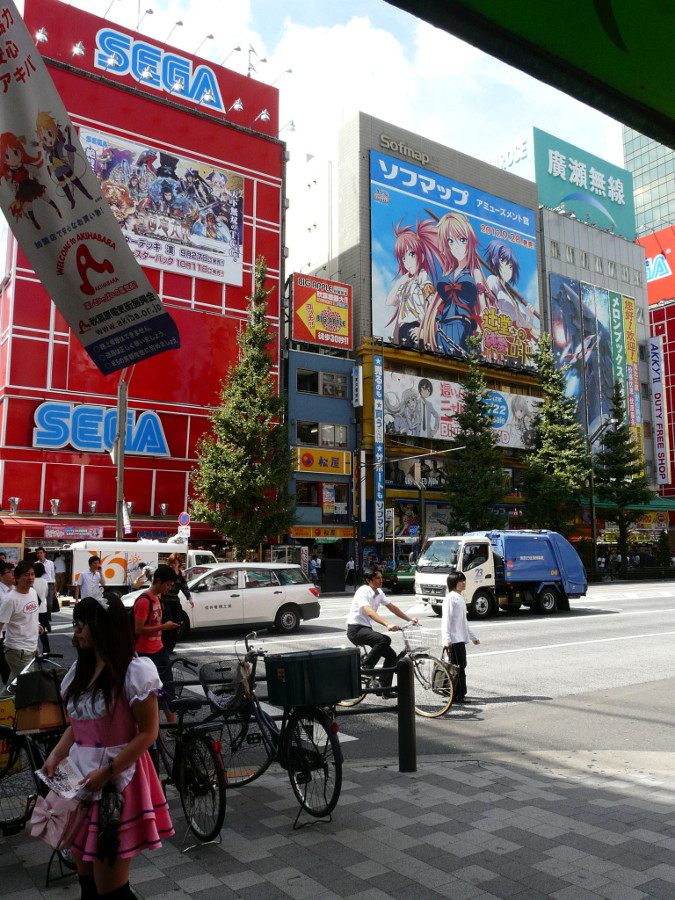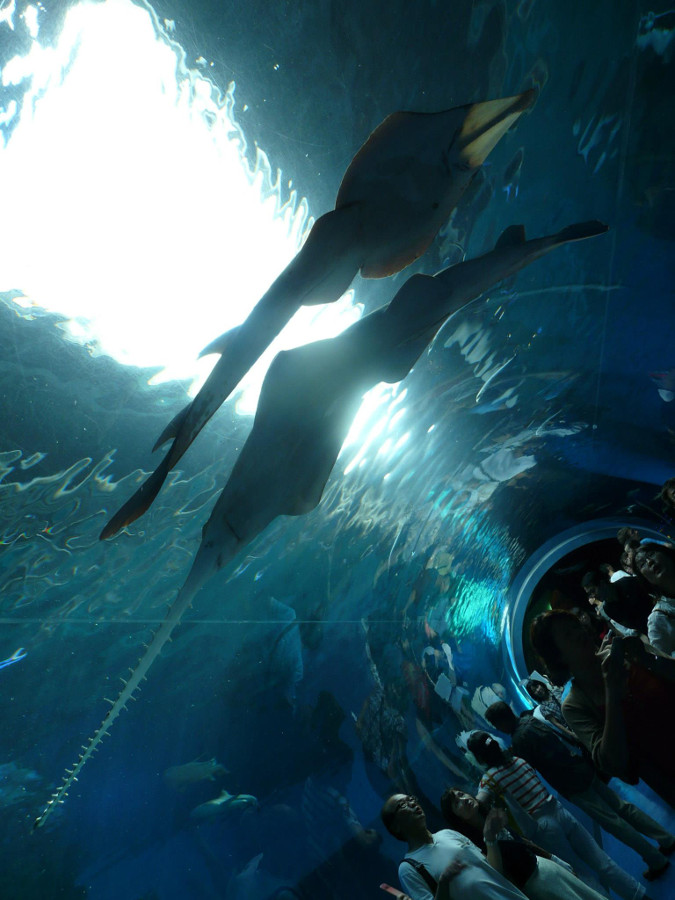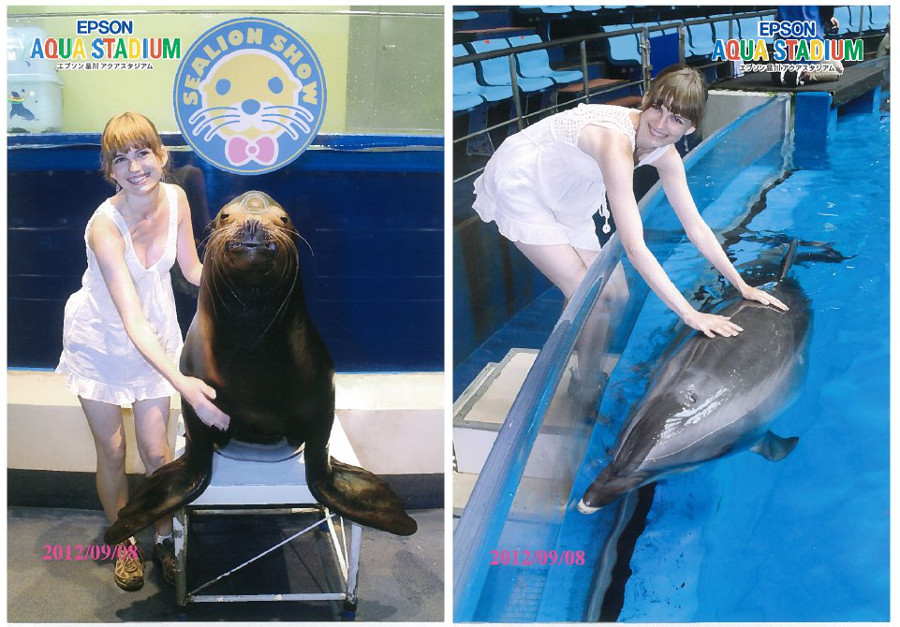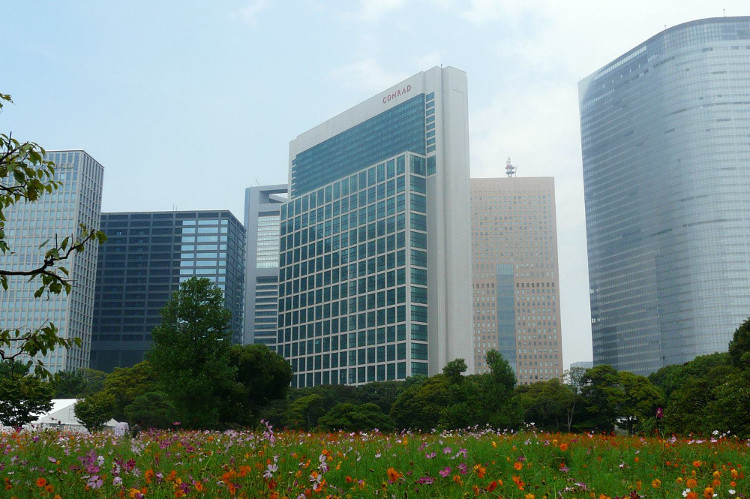Tokyo is a huge city. Approx. 9 million people live in it, and from the surrounding cities another 3 comes to work and learn. When standing on top of Fuji one can see, that the Tokyo Metropolis stretches from the sea to the foot of the mountains. Metropolis Tokyo consists of Tokyo, along with other major cities that are adjacent to it. In total, approx. 35 million inhabitants live in it. I always associate big cities with tons of concrete, trash, noise and not always pleasant smells – the vast majority of my experiences confirm my vision of a big city. Why “vast majority” instead of “all”? Firstly, because Tokyo stood out from the crowd of cities resembling this, standard for me, image. Yes, it is full of concrete, but apart from that, it is also full of “pearls” 🙂 Tokyo is also very clean, extremely quiet, and with neutral odor.

Tokyo is bewitching…
Catch your breath in the park
Tokyo’s parks are, in my opinion, charming. Every square meter is precisely planned, well-kept, green. These are some of the main centers of relaxation near the nature for city dwellers who have not gone beyond the city walls during the weekend. Although in most towns parks are mainly filled with athletes, caregivers along with their pets, or families, in Tokyo parks are primarily an oasis for people developing their interests. And so you can come across photographers, illustrators, painters, musicians who seize their opportunity to celebrate art and nature, and hone their skills. Interestingly, they are mainly elderly people. Youth appreciates taking walks with friends over development of interests in art. Cyclists, skateboarders, and joggers are almost unseen. It is said that in the morning or in the evening it is possible may see adepts of tai chi, but I have yet to meet them.
In Hama Rikyu garden, one can test a remote guide. An employee of the garden helps in equipping the headset and the device that checks visitor’s location using GPS. On the basis of the place where they are, it reads about its history in a previously selected language. The stories, in my opinion, are interesting and worth listening to. We’ve been given the remote guide set by a sympathetic older man who spoke excellent English and knew even a few words in Polish, of which he was immensely proud 🙂 After we made use of the equipment and gave it back, we were asked to complete a survey about our satisfaction with the experience. After all, in 2012 the project was still in the experimental phase, so the opinions of users were very important.

The oldest pine in Japan is located in the Hama Rikyu garden – it is more than 300 years old. It is cultivated by gardeners manually. One gardening takes up to a week!
Nowadays the hanami festival is a perfect opportunity to celebrate with friends and/or family in the shade of blooming Japanese cherry trees. hanami held in the evening is called yozakura. It is an event so big for millions of Japanese, that the progress of the blooming process has even a special website. Not only specialists from the weather office poth there their opinions, but also the citizens give detailed accounts of flowering of cherries in their cities. Moreover, reports on the state of the inflorescence of cherry are given a moment during weather forecasts or news. In addition, newspapers keep readers informed about the state of cherry blossoms. The first flowering starts up in February in Okinawa, and the last in May in the northern parts of the country. The celebrations are usually quite intense, because the flowers bring joy and delight only up to two weeks. At that time, not only photographers are extremely active.
Currently hanami is an excellent opportunity for having picnics with beloved ones or yozakura, where all adults enjoy having some booze. Contemplating the beauty of cherry blossoms at night can be just as captivating as admiring them during the day – especially for those who celebrate the cherries in the evening and night, many parks and gardens are decorated with paper lanterns or electric lights. It is said, that the Ueno Park is particularly well decorated for the event. Apparently in its neighborhood, as well as in Harajuku, one can meet cosplayers. We, unfortunately, did not have the luck to find them, but there is at least one place in Tokyo, where you’re sure to find cosplayers…
Neon lights of Akihabara
Akihabara is one of the most colorful districts of Tokyo. Everything can be found there, from Maid Cafes through cosplayers to electronics literally from all possible times. This place is extremely colorful not only because of the ubiquitous billboards, but also thanks to the people. Imagine this situation: you see older men sitting on the sidewalk and exchanging images of young J-pop stars. Peculiar, is it not? In Europe it is just “not fitting for a man” to do so. Here most of what somebody likes (even if Europe it is considered weird) you’re ok. What’s more, it’s highly probable to find other enthusiasts with similar interests.
Notable places of interest are otaku gadget-shops- full of comic books, CDs with films and TV shows, detailed manga figurines, plush-toys, and all the other gadgets desired by souls of those “manga-addicts”. In addition, it very easy to confuse this place with “adult stores”, which of course I did. The front of those stores is covered mainly by clothes. Deceived by this facade I went inside – I was convinced that this is a place with accessories for coplayers. I only found out how much I was wrong, when I discovered among the shelves some movies with content, which shocked me. What was there, I would rather not write, I leave that up to the Reader’s imagination. Apparently pornography is banned in Japan, but life goes on with its own course. I’ll just add that today, instead of running away in shame, I would have photographed it all 😉

Quick glance at Akihabara. In the photo, I managed to capture the Maid Cafe worker handing out leaflets – because she was at work, she was not eager to pose. Details of Maid Cafes can be found here.
It should be emphasized that the Japanese are not promiscuous. It’s exactly the opposite – in some respects they should serve us as an example. They treat sexuality as something natural. I’ve seen a lot of couples who went together to the above mentioned shops and chose something for them. There were pair in the age as my parents, who would not have dared to make such a trip in their lives (or so I think). An example can be the famous all over the world Kanamara Matsuri festival in Kawasaki, or the festival of the penis.
Although at the sound of the feast’s name almost everyone has before their eyes Japanese girls eating phallic-shaped-food, it is not a major part of the holidays, but is keenly being shown on blogs and in the media. Imagine, that if such a festival was to be held in Poland, the media would show primarily clashes of mohair-grannies with aggressive youth gangs. For this reason, lets divide all the reports by five (meaning not taking them to seriously) 😉 Returning to the meaning of Kanamara Matsuri, in the old days it was a festival during which people prayed for success and protection against failures in business, the welfare of the clan, for harmony and happiness in a relationship, and for an easy birth. Also, “Businesswomen” prayed to the patron of the feasts for being immune to sexually transmitted diseases. Nowadays funds raised during the festival are transferred to foundations fighting against HIV.

It is said, that they are not so dangerous, but still are awe-inspiring – one of the sharks in Epson Aqua Park’s aquarium in Tokyo.
Something for animal lovers
A lot of joy gave me the visit to the Epson Aqua Park and, therefore, I particularly recommend you doing the same. In addition to having the standard attractions such as large, fully aquatic fauna and flora aquariums or animal shows (seals, dolphins), one can experience something even more interesting. Those pleasure are not the cheapest ones, but, in my opinion, are worth the price: visitors can pet the dolphin, play with a seal, as well as feed a manta. Unfortunately, I could not do everything, but I was still able to make some of my small dreams come true in this park 🙂

They were so cute! 🙂
To my surprise, my visit to the zoo in Tokyo was not as nice of an experience as I expected. I have to point out, that animals are treated well there, they get enough food, look healthy, but … Well, what was precisely wrong? Three things: the temperature, which clearly tired most of the animals from non-tropical countries, cages, and crowds of visitors. Cages and pens, which were not only quite small, but also fenced dense with bars, which I have never seen in any zoo before. And you need to know that I am a big zoo-lover, and if a city has one – I will definitely get there 😉 I already met the Japanese and their extremely cautious side, and I suspect that those cages and bars were due to their care and attention to both the safety of the animals and visitors. Speaking of visitors, do not be surprised if you are forced to stand in a line. Especially when going to see the pandas, which are, apparently, enjoying great popularity in Japan 😉 Additionally, in Japan in moats, city ponds, and the like, one can face… turtles! 🙂



The charming and sleepy protégés of Tokyo Zoo and turtle-beggars from the city’s moat 🙂
How to plan the trip, and should you expect surprises?
I came across an opinion that it is impossible to encounter any obstacles during a trip to Japan – the plan will always be executed in 100%. For some it is incredibly boring and reduces satisfaction with the tour. Honestly, I can not give them wrong – if you have little time and a detailed, rational plan on visiting, rather nothing will stand in your way. However, the plan itself will be an obstacle. Some may be surprised, but that’s what usually happens. The most interesting things and the least expected events can be experienced in Japan only when one does not hurry, which is the exact opposite of the standard for most, if not all, countries outside of Japan. It is in Japan, where seemingly everyone is in a hurry, that a person should to give themselves time. However, we realize that not everyone can afford this luxury, so let’s go straight to the point: which places are the best to be seen in Tokyo?

In addition to the attractions that I mentioned above, you can get a glimpse of Ginza, which is the most bourgeois neighborhood in Tokyo. I especially recommend the Rollex shop – prices are dazzling 😉 For a moment of attention deserve Roppongi Hills, which is a building (and its nearby surroundings) where the largest companies in Japan have their headquarters. For each big company it is a point of honor to have offices in this place, but the prices are outrageous 😉 Party-lovers should hit Roppongi and Shinjuku, and for cinema-fans: the famous intersection in Shibuya, which caught the attention of many movie directors. One should also visit at least one museum. Good opinions have the museums of Edo and Ghibli Studio . Unfortunately, I haven’t been in any of them, but I would like to advise my Readers on one point with regards to the Ghibli museum. Tickets must be ordered in advance, by e-mail. They can be also bought in vending machines in 7-Eleven stores, but the next free slots are usually available in a month’s time. So, if somebody would like to go there, think about this beforehand 🙂 Edo Museum is located in the palace complex, which I is also recommend seeing. Moreover, an incredibly interesting experience is to watch the auction of tuna in the fish market – if someone would like to see it, then they have to get up very early in the morning… 🙂

Unknown to us local festival
What about any surprises? In addition to the abundance of small, fascinating details, we have seen a local festival. I do not know its name, unfortunately. During the procession through the street (secured by the police) people played, sang, and carried a shrine. Ladies sold orange segments in soaring prices… 😉 We also, by accident, found a festival of food while walking in Asakusa. We were handed the menu of the festival (two to three dishes for a restaurant), explained how does it work, and were recorded by some local TV. Of course, we took advantage of the offer – it was very tasty. Consequently, remember to always have your eyes open in Japan! 🙂

With the mascot of the food festival (of course, I was photographed by laughing Japanese – could it have been yet another gaijin faux pas?) 🙂
Useful Links:


